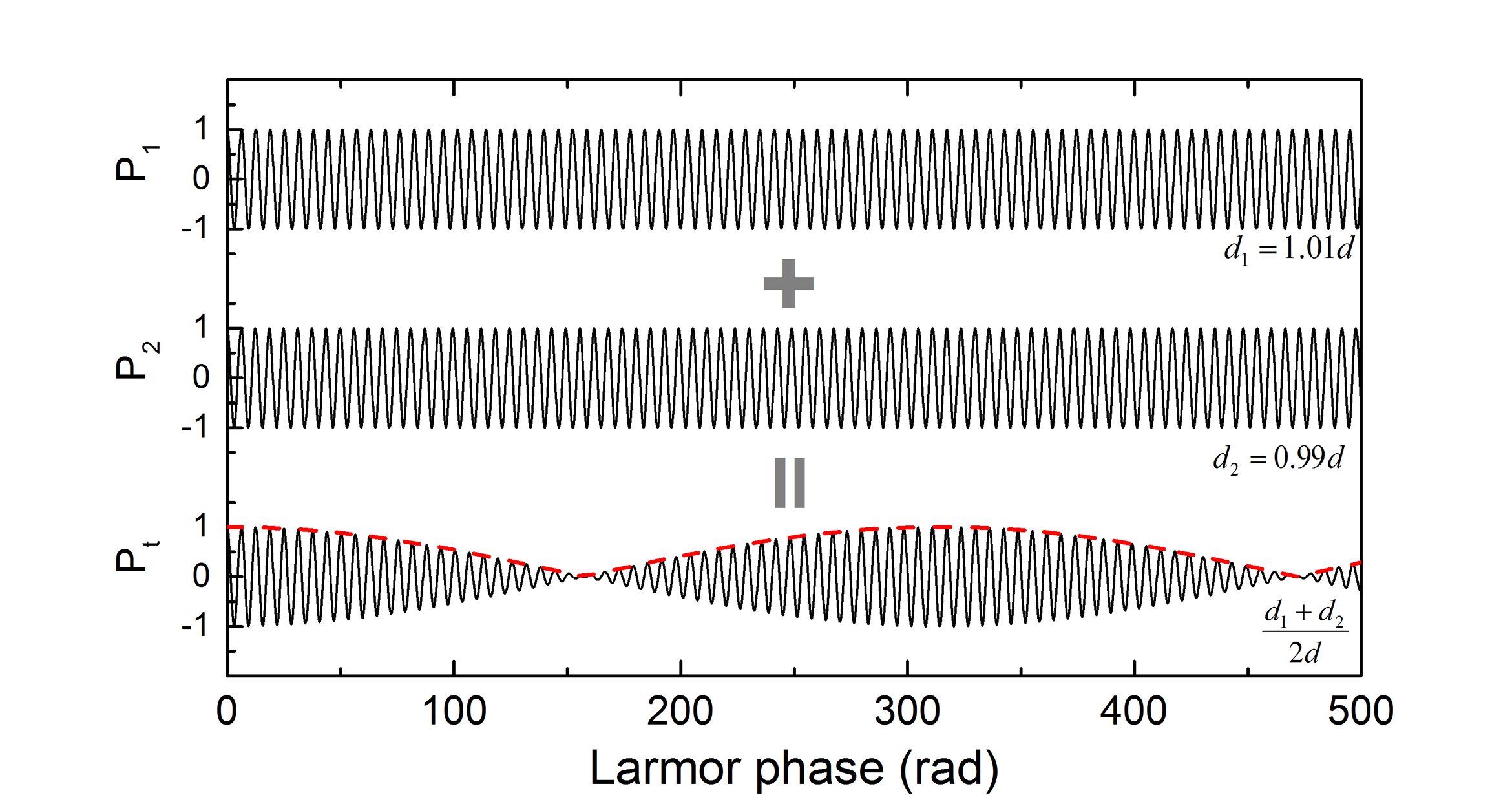Larmor diffraction
Neutron Larmor diffraction (LD) is a high-resolution diffraction technique that takes advantage of the Larmor precession of polarized neutrons. In contrast to conventional diffraction techniques, LD does not depend on the accurate measurement of Bragg angles. Instead the lattice spacing is encoded and amplified into Larmor phase of neutron spin. Moreover, the resolution is independent of the beam collimation.

Larmor diffraction performs the Fourier transform of the lattice spacing distribution function.

Similar to the beat in acoustics, the neutrons diffracted from different Bragg peaks can generate an interference pattern.
Larmor diffraction is readily available on the HB-1 Instrument of HFIR.
Specifications
The resolution depends on the diffraction angle and is highly application dependent.
Thermal expansion

bragg peak distortion

absolute bragg peak splitting

Pictures
Take a peek inside our work!
References
- Larmor precession, a technique for high-sensitivity neutron diffraction, M. T. Rekveldt and et al, Europhysics Letters. (2001), 54, 342-346.
- High resolution neutron Larmor diffraction using superconducting magnetic Wollaston prisms, F. Li and et al, Scientific Reports, (2017), 7, 865.
- New capabilities in high-resolution neutron Larmor diffraction at ORNL, F. Li and et al, J. Appl. Cryst. (2018). 51, 584-590.
